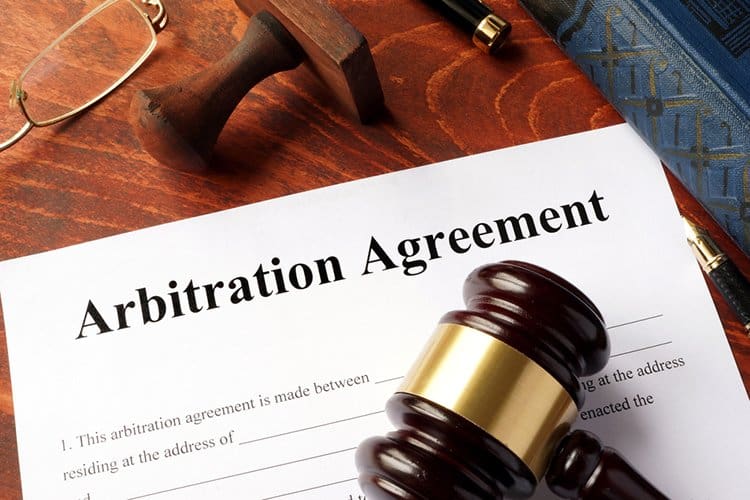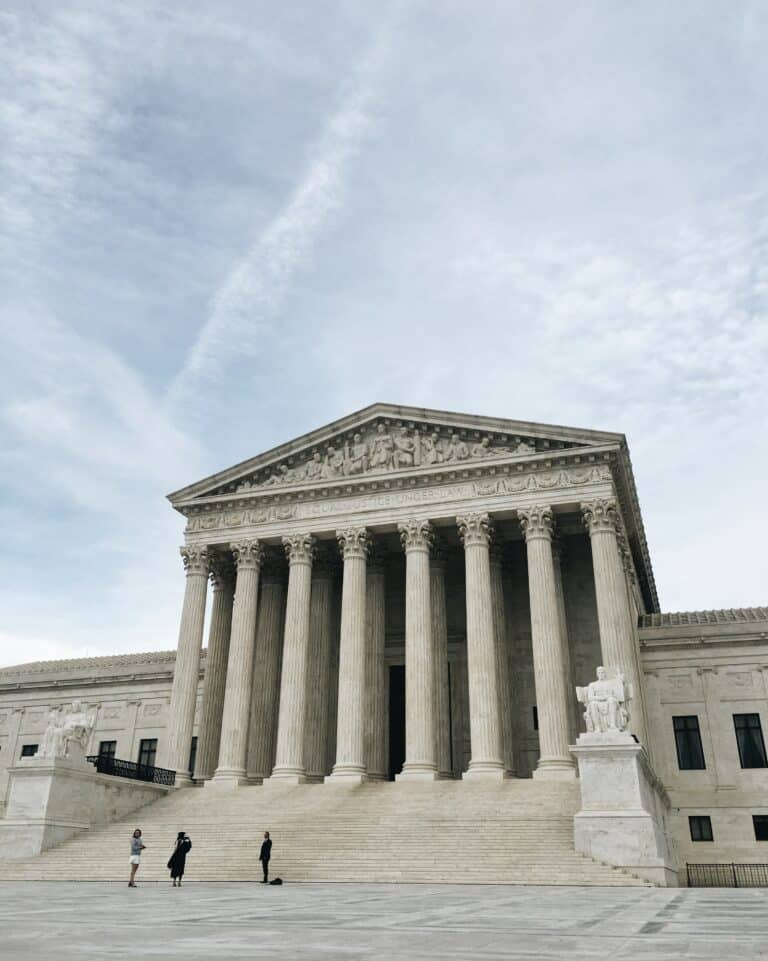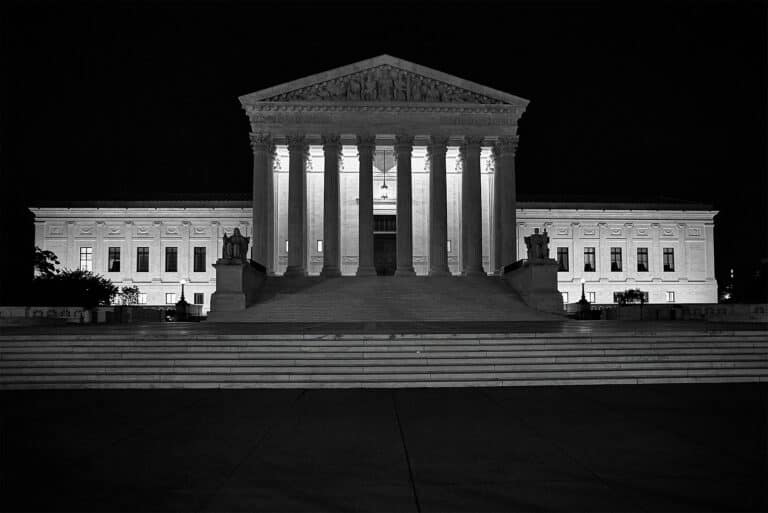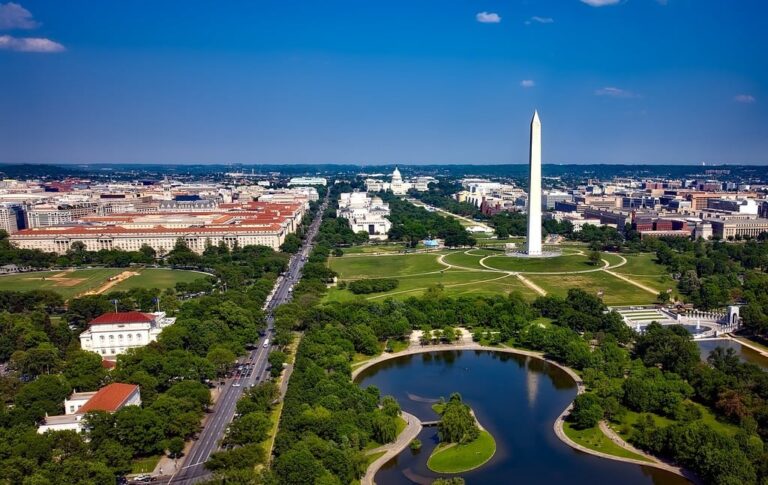
Andrew Strom is a union lawyer based in New York City. He is also an adjunct professor at Brooklyn Law School.
At the Supreme Court oral argument in Cedar Point Nursery v. Haddid, Joshua Thompson, the lawyer representing the growers, staked out a revolutionary interpretation of the Fifth Amendment’s “takings” clause, while simultaneously insisting that accepting his theory would have hardly any real world consequences. When the Justices offered him a narrower path to victory, he said, “no thanks,” and while I’m sure six Justices are broadly sympathetic to his deregulatory agenda, it’s possible that even with a favorable crew of “umpires,” like many batters who swing for the fences, he will strike out.
In this case, the Pacific Legal Foundation, an anti-regulation advocacy group, has brought a case on behalf of two large agribusinesses challenging a 45 year-old California regulation that lets union organizers come on to private property in limited numbers to talk to farm workers during their lunch breaks. The growers claim that this access regulation is a “taking” of their private property, and they are entitled to compensation by the State. While the regulation allows access before and after shifts and during lunch breaks, because the growers control transportation to the fields, the only practical time for the United Farm Workers to seek access is while workers are eating their lunch. Likewise, while the regulation theoretically allows the union to seek access during four separate 30-day windows each year, elections must be held during the peak growing season, and as a result, access is rarely sought at other times.
At the argument, the growers’ lawyer staked out the most extreme position, and refused to give any ground. Justice Barrett asked about a theoretical regulation authorizing access for one hour on a single day each year, and Thompson insisted that would also be an unconstitutional taking. Thompson rested heavily on a case where the government had flown planes at very low altitudes over private property used as a commercial chicken farm and residence, and another case where the government built a fort next to a resort hotel and repeatedly fired weapons over the property. But, there’s a huge difference between those cases and the growers’ case. In the cases involving the planes and the weapons, there were claims of loss of property value. In the weapons case, the Court noted that “the public has been frightened off the premises by the imminence of the guns,” and in the airplane case, the property owners were no longer able to raise chickens and their sleep was disrupted as well. Here, despite repeated prodding from the Justices, Thompson could point to no economic harm to the property owners from the access regulation.
Even though Thompson insisted that a grant of access for one hour a year would be a taking, he simultaneously claimed that a victory for the growers here would not endanger any governmental safety inspection of a private business. Justice Sotomayor tried to clarify the theoretical underpinning of the argument. She asked whether the difference was that the union organizers in this case were not acting as government agents or contractors, and Thompson responded that it would make no difference if they were government agents. In response to a question from Justice Thomas, Thompson conceded that “any time the government undertakes its power to search, it would not be a taking.” Clarifying this point, he later said this would “save all the administrative and inspection regimes.” So, apparently, under his theory, the State of California could deputize union organizers to conduct health and safety inspections of working conditions on these farms, but it crosses the line if it authorizes the same organizers to go onto non-working areas to educate workers about their right to unionize to improve those conditions.
Justice Barrett expressed frustration about how to draw lines under the growers’ theory of the case. The Chamber of Commerce had suggested that Congress could insist on reasonable physical access to a manufacturing or food processing facility as a condition of allowing businesses to enter those markets. Justice Barrett asked why the same logic shouldn’t apply in the agriculture industry. Thompson’s response displayed profound ignorance about the risks posed by industrial agriculture. He said, “we’re not talking about toxic chemicals…. There’s quite an unambiguous line between those substances that can cause public harm and entering into agriculture.” In fact, a 2014 U.S. Department of Agriculture study of 21 major crops found that growers applied over 500 million pounds of pesticides. On its website, the Occupational Safety and Health Administration discusses some of the hazards farmworkers face from pesticides: “Workers may be exposed to pesticides in a variety of ways, including: working in a field where pesticides have recently been applied; breathing in pesticide ‘drift’ from adjoining or nearby fields; working in a pesticide-treated field without appropriate PPE; eating with pesticide-contaminated hands; eating contaminated fruits and vegetables; and eating in a pesticide-contaminated field.” One danger of deciding important cases like this without a record is that it’s not clear if the Justices will be forced to acknowledge that the work farmworkers do is fundamentally different from whatever gardening the Justices might be familiar with.
Justice Kavanaugh tried to offer a potential path to a narrower victory for the growers, but Thompson wanted no part of it. Kavanaugh suggested that this case should be decided based on NLRB v. Babcock & Wilcox, a Supreme Court case governing nonemployee access under the National Labor Relations Act. In that case, the Court held that employers are not required to allow access for nonemployee organizers “if reasonable efforts by the union through other available channels of communication will enable it to reach the employees with its message and if the employer’s notice or order does not discriminate against the union by allowing other distribution.” Kavanaugh was apparently suggesting that any access that goes beyond that holding would be a taking. But, if, as the Court has long held, the government can mandate access for union organizers in some circumstances, it’s hard to understand the theory that would turn the same grant of access into a taking simply because the Court disagrees with the State of California about whether access is required to facilitate the farmworkers’ right to organize.
When California Solicitor General Michael Mongan got his turn to argue, Justices Thomas and Barrett pressed him on whether the outcome would be different if the access grant was not related to the business operations on the property. Justice Thomas posed a hypothetical where California demands access to the property for members of the National Guard to hold drills, and Justice Barrett asked whether a homeowner who lived on a busy corner would have to allow protestors to gather on her property to display signs to passing drivers. Here’s an easy way to distinguish those hypotheticals: the decision to employ people on the premises expands the State’s police powers with respect to that premises. And, just as the State may order reinstatement of employees the entity would prefer not to allow the back on its premises, the State should be allowed to give a limited grant of access to union organizers to promote a system of industrial self-governance designed to stabilize and improve the working conditions of a long-exploited group of workers.










Daily News & Commentary
Start your day with our roundup of the latest labor developments. See all
July 15
The Department of Labor announces new guidance around Occupational Safety and Health Administration penalty and debt collection procedures; a Cornell University graduate student challenges graduate student employee-status under the National Labor Relations Act; the Supreme Court clears the way for the Trump administration to move forward with a significant staff reduction at the Department of Education.
July 14
More circuits weigh in on two-step certification; Uber challengers Seattle deactivation ordinance.
July 13
APWU and USPS ratify a new contract, ICE barred from racial profiling in Los Angeles, and the fight continues over the dismantling of NIOSH
July 11
Regional director orders election without Board quorum; 9th Circuit pauses injunction on Executive Order; Driverless car legislation in Massachusetts
July 10
Wisconsin Supreme Court holds UW Health nurses are not covered by Wisconsin’s Labor Peace Act; a district judge denies the request to stay an injunction pending appeal; the NFLPA appeals an arbitration decision.
July 9
the Supreme Court allows Trump to proceed with mass firings; Secretary of Agriculture suggests Medicaid recipients replace deported migrant farmworkers; DHS ends TPS for Nicaragua and Honduras